digest | Robot Spider: weaves building materials of the future
May 10, 2019
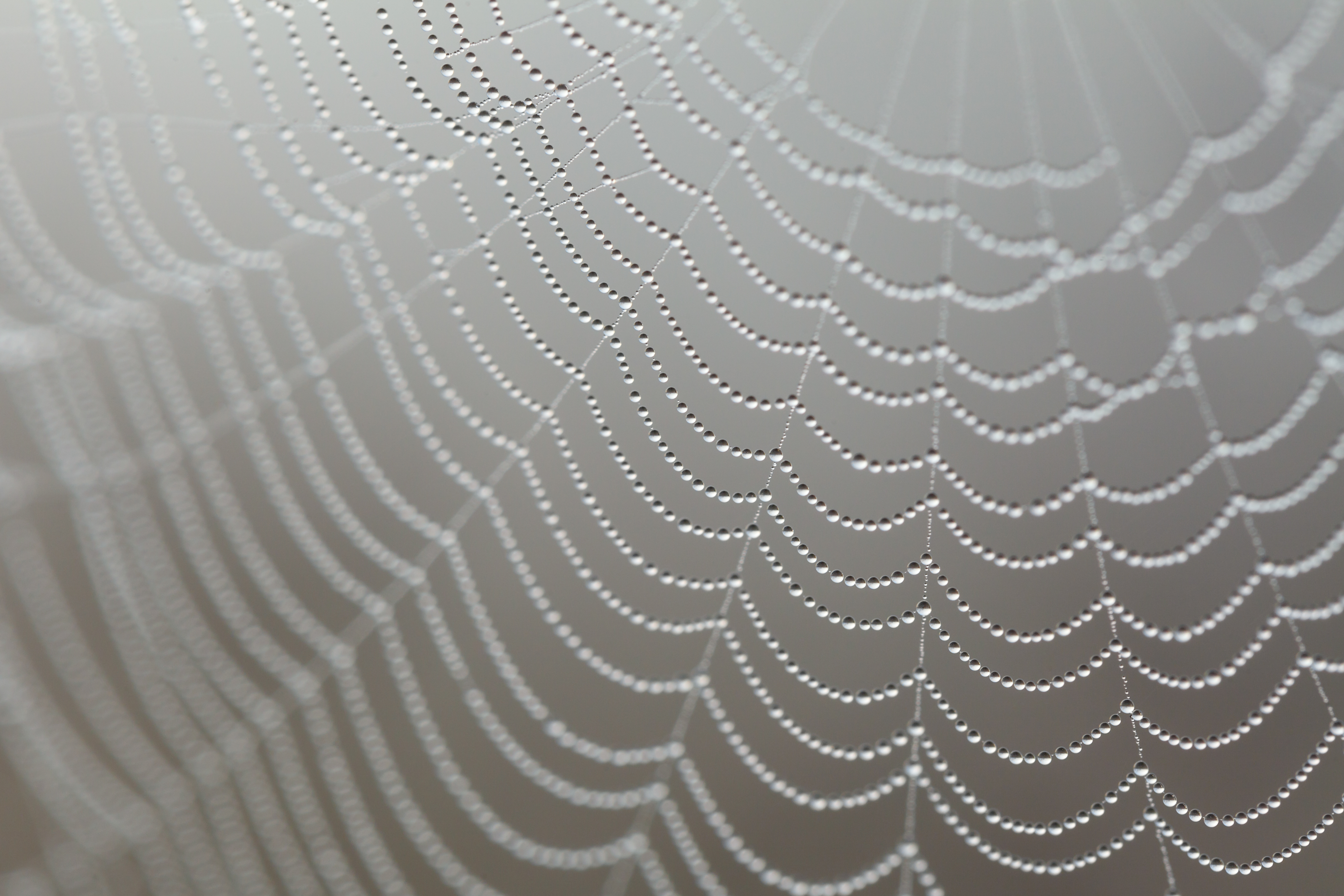
image | above
A close-up of a spider web with rain drops clinging to the silk.
— contents —
~ story
~ about
~ video
~ pages
~ by definition
~ special section
~ learning
~ reading
— story —
Inspired by nature, a remote-controlled robot at the Massachusetts Institute of Technology’s Media Lab is weaving a cocoon-like structure, with a software programming help from humans. Eventually it will be made autonomous. This spider-like robotic machine could one day weave a building. Researchers at the lab call this ‘‘spider silk inspired robotic fabrication.’’
Spiders create sophisticated silk webs by changing composition, material make-up, and organization of their silk threads. The lab is exploring digital fabrication and bio-mimetic design. They’re creating fibers inspired by the silk created by spiders. The lab hopes to build woven architectural structures without seams — that are continuous in morphology and physical properties.
The researchers are using a robot arm to test weaving ability — with the goal to successfully develop a larger system. An engineer from the project explained:
‘‘Usually with 3-D printing you see layered manufacturing: depositing one layer of material, followed by another layer on top. So in this project we’re using tensile elements instead. Think strings, ropes, and elastic bands.
We’re exploring how you can have a manufacturing process that looks at your surroundings. It surveys the environment and says: we have branches here, some pegs over there, and those objects — that we can weave around. Sort of like a spider or silk worm.’’
— Elisabeth Tsai | research assistant • Media Lab at MIT
The robot is currently using a yarn-like material. But researchers plan to swap-out the current string with a special nylon that can stretch when wet — and become brittle when it dries. For this prototype, the robot spider knows the position of all hooks + pegs surrounding it. It’s crafting a design that was pre-programmed by software. Eventually the team wants to make the robot independent. That means it would be able to sense where the pegs + hooks are located, and weave a custom design on its own — adapting to fit its environment.
image | below
top: A silk worm emerging from its cocoon as a moth.
bottom: Cocoons harvested for their valuable silk thread.
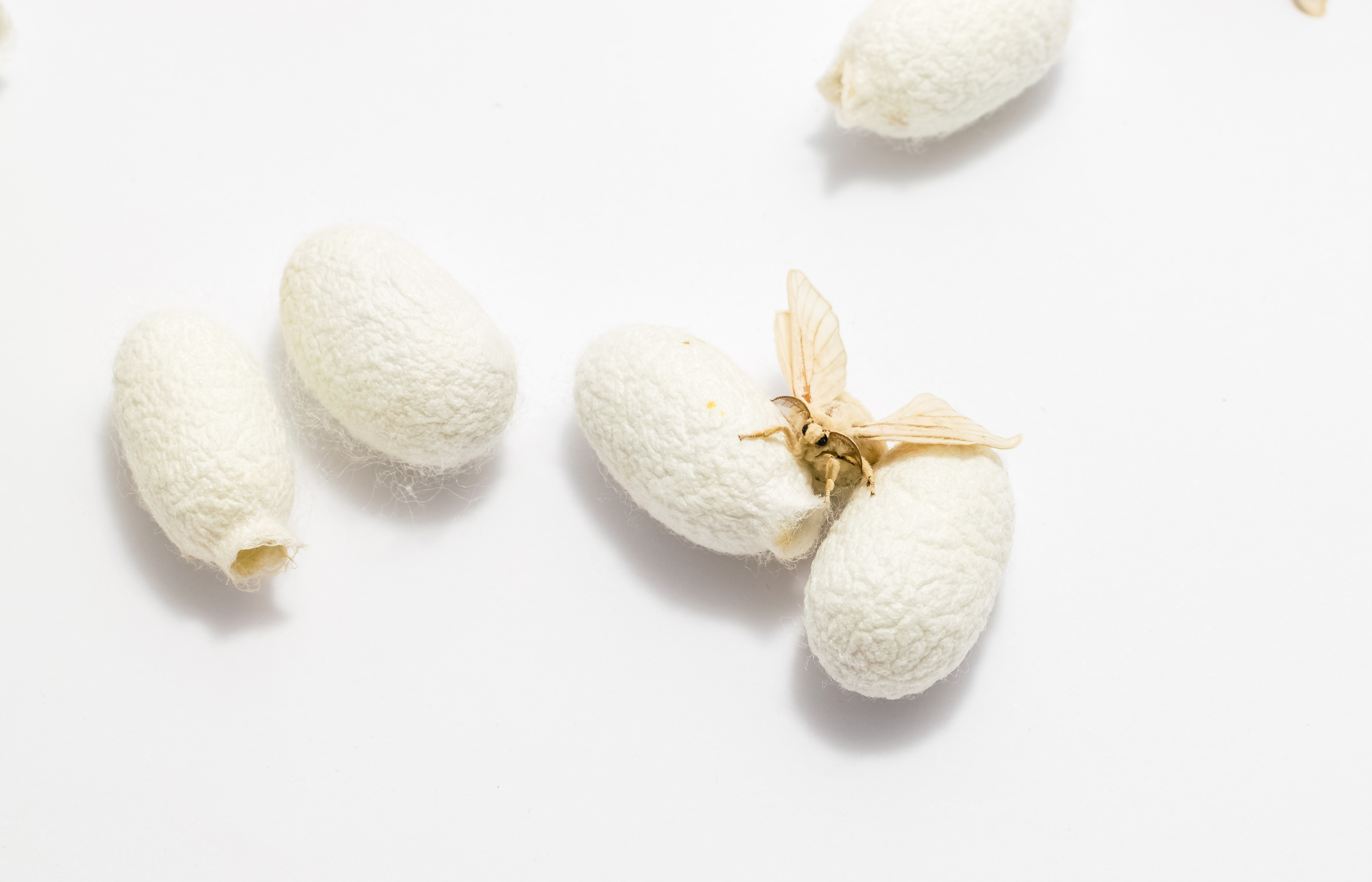
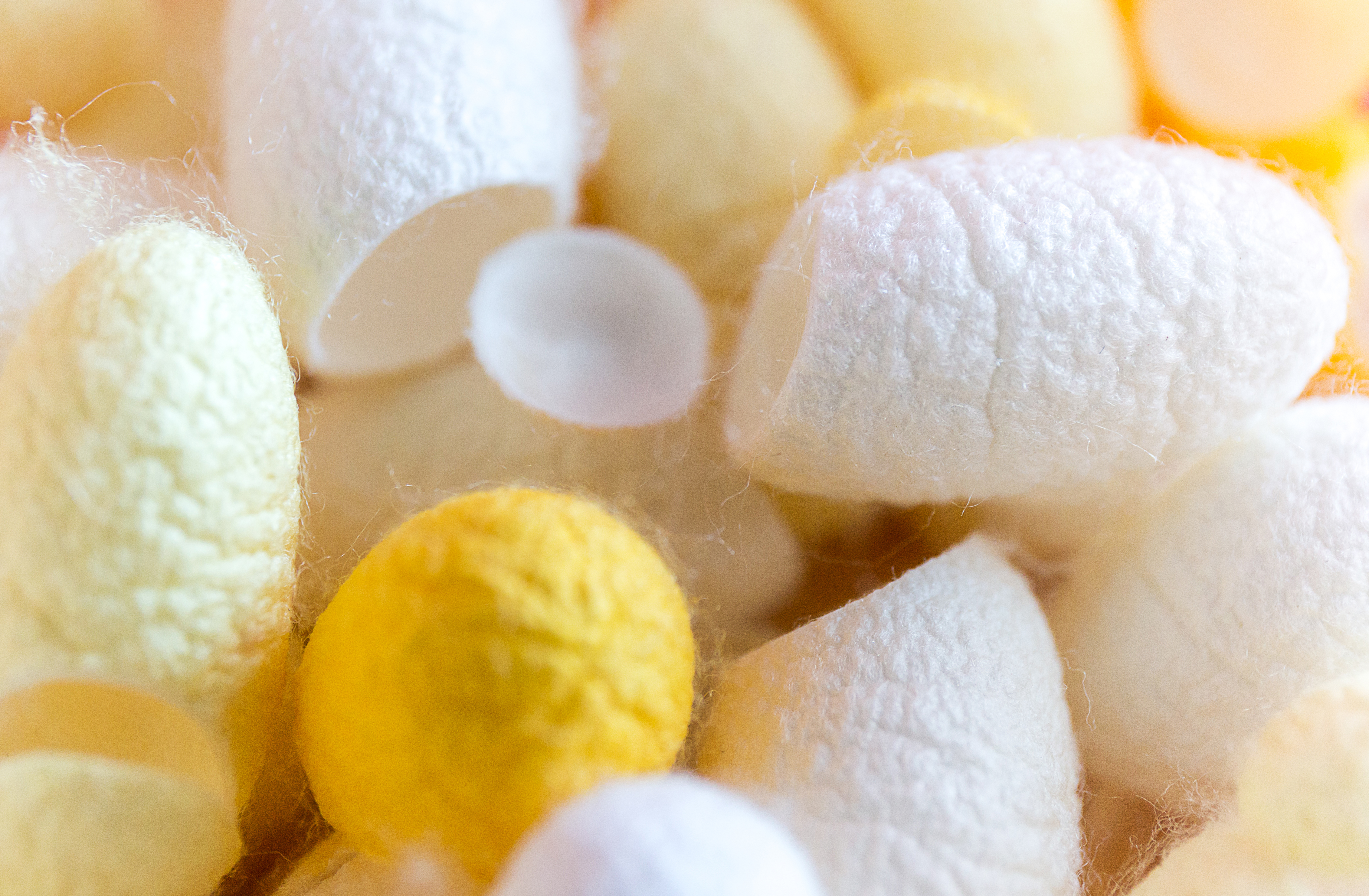
about | the project
The research prototype is named CN-SILK = computer numerically controlled silk cocoon construction. It was created by a specialty team at MIT’s famous Media Lab called the mediated matter group. Their description is:
‘‘Our concept of mediated matter is how digital and fabrication technology mediates between matter + environment — to radically transform the design and construction of objects, buildings, systems. Designing for, with, and by nature.’’
— mediated matter group | Media Lab at MIT
watch | video
Prototype robot spider weaves architectural structures with string.
on the web | pages
Media Lab • by MIT | home
Media Lab • by MIT | mediated matter group
Media Lab • by MIT | research • Spider Silk: inspired robotic fabrication
Media Lab • by MIT | YouTube channel
MIT | home
MIT | YouTube channel
motto: mind + hand


by definition | morphology
(noun) mor · phol · o · gy
The study of the forms of things.
A branch of biology that examines the form of living creatures.
special section | string shape architecture
String as a 3-D architectural material creates a light-weight but supportive under-structure for building. Different geometrically balanced shapes — that can be programmed into a software system that’s attached to a robot dispensing + weaving arm — can create fundamental building blocks for making buildings or objects. Each shape has a variety of strengths or weaknesses.
Computer programmers and architects work together to discover the best load-bearing patterns that will incorporate modern living needs: windows, roof, floor, utilities — including portability, openness. The cities of the future will also rely on time efficiency + movability — how easy it is to quickly create a habit and re-locate it.
Spider’s silk is a type of string. Almost any substance can be spun into a yarn. So materials scientists study the wide range of benefits or difficulties inherent in each type of yarn they can create. A lot of labwork is needed to test the potentials of each kind of string.
 on the web | reading
on the web | reading
publication: Architonic
story title: The very fabric of architecture
deck: Textile use in construction
read | story
images | below
Examples of string geometries.
photos: by Katie Michelle Spoelstra • Geo Mod Art
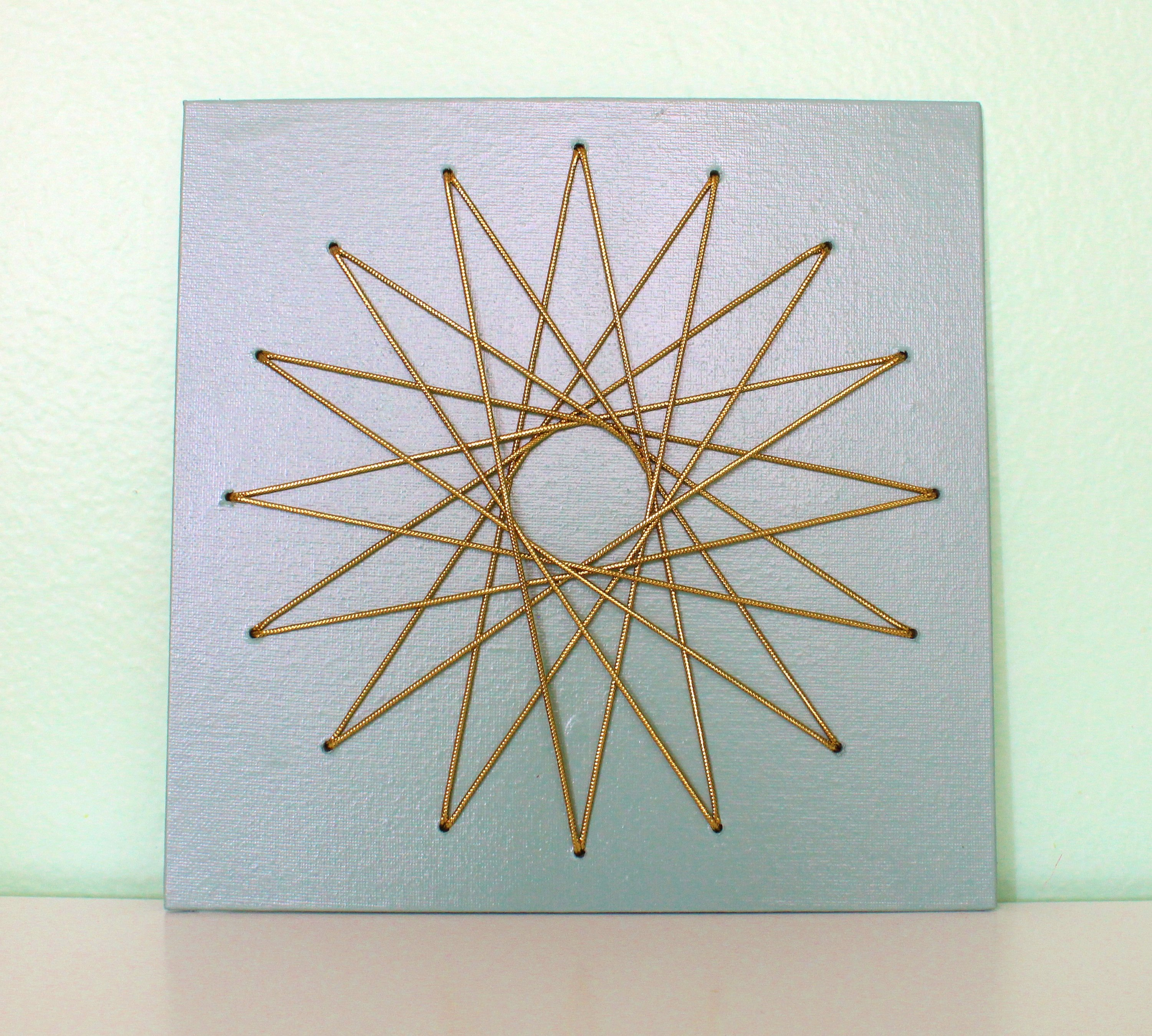
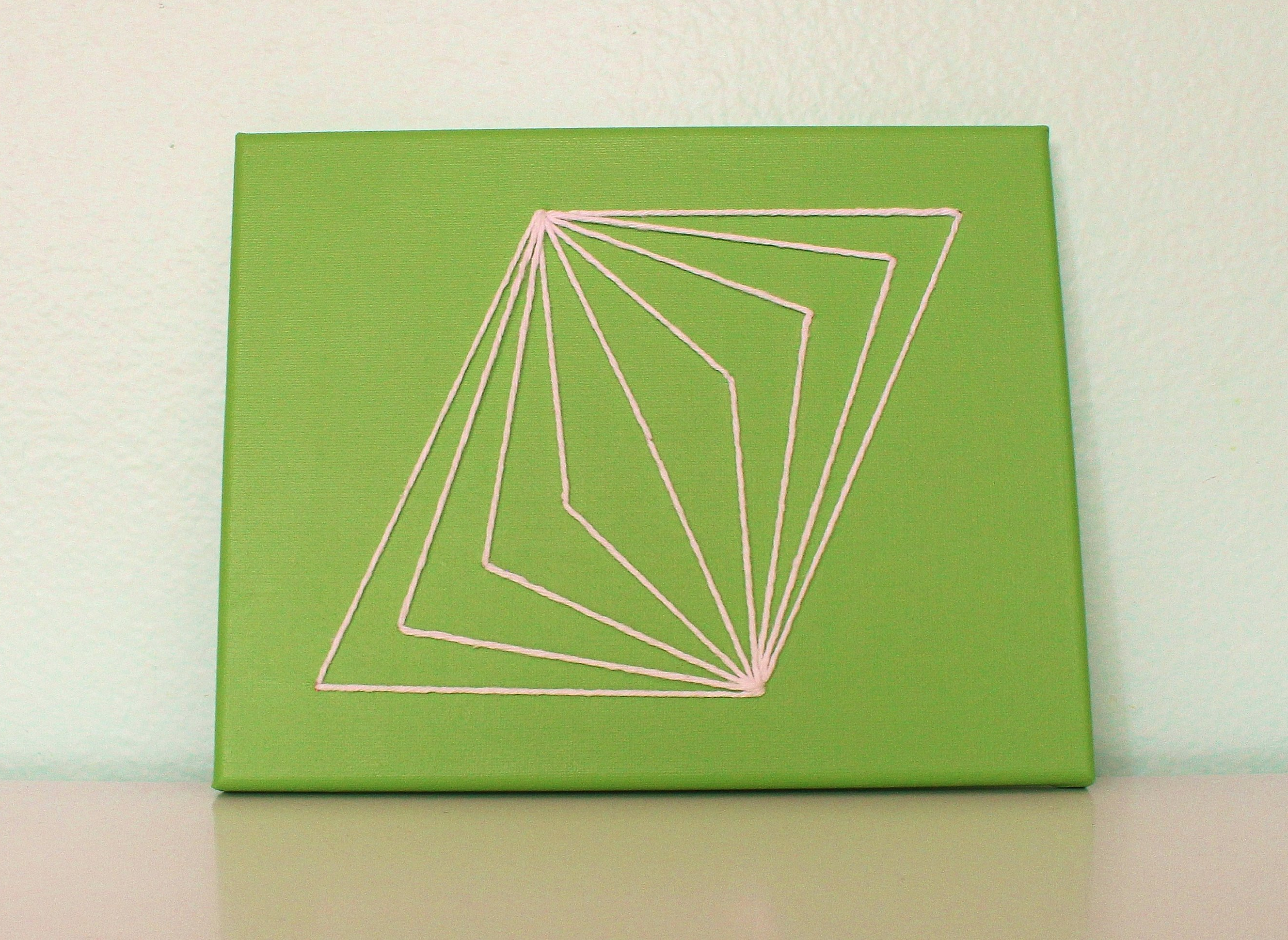
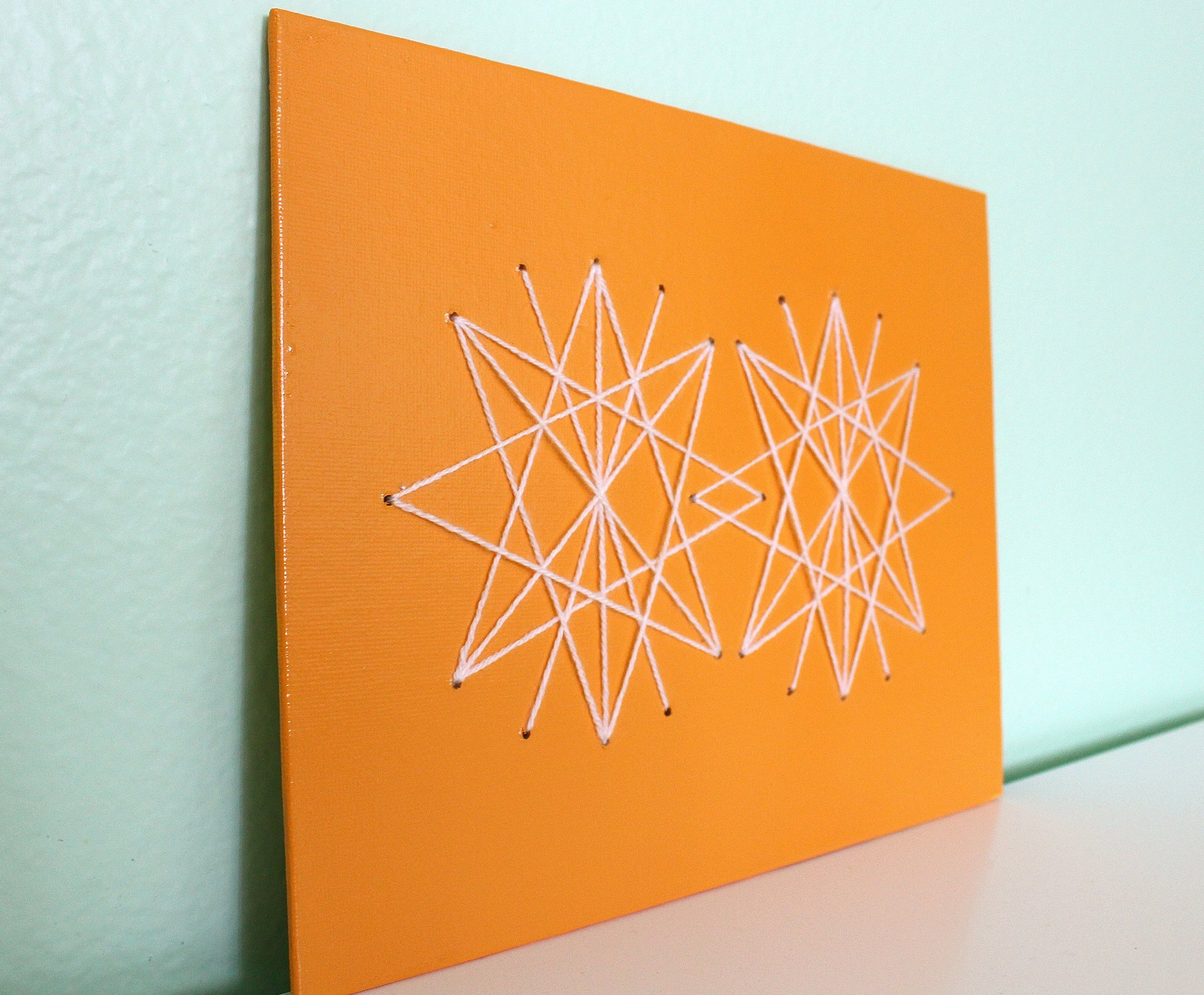
on the web | reading
PC World • by IDG | Robotic Spider
deck: Weaves web at MIT Media lab
— notes —
MIT = Massachusetts Institute of Technology
IDG = International Data grp.
BBC = British Broadcasting co.
PC = personal computer
